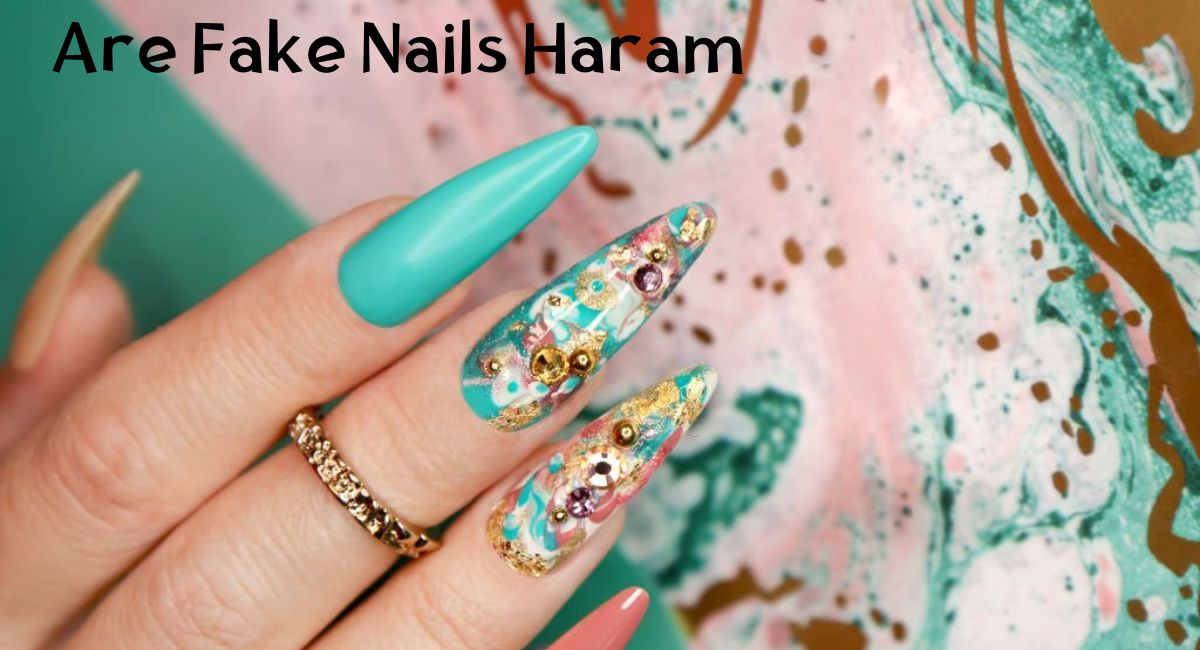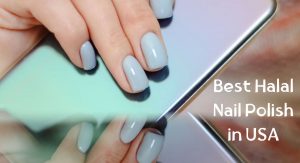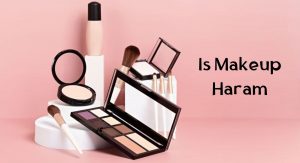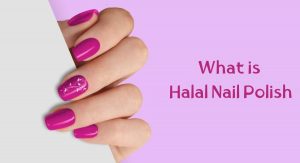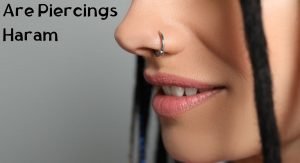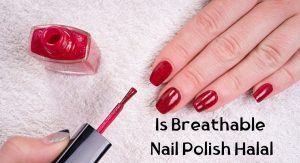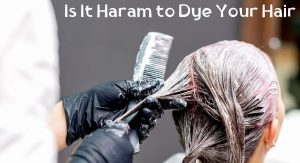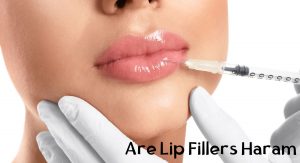Yes, fake nails are considered haram. The permissibility of using fake nails in Islam can vary based on different interpretations and schools of thought. Some scholars may consider it haram due to concerns about altering the natural appearance of the body and potential issues with the materials used. Others might deem it permissible as long as it adheres to Islamic principles and doesn’t involve imitating non-believers or excessive vanity.
The question of whether fake nails are permissible in Islam has sparked debates among scholars and adherents alike. While some consider the use of fake nails to be culturally acceptable, others argue that it may fall under the broader Islamic concept of modesty and natural adornment.
This article delves into the various viewpoints surrounding fake nails within the context of Islamic teachings, shedding light on the diverse perspectives and considerations that shape this discourse. By examining religious texts, cultural practices, and individual interpretations, we aim to provide a balanced exploration of whether fake nails can be deemed as haram or permissible in Islam.
What Are Fake Nails
Fake nails, also known as artificial nails, are cosmetic enhancements that are applied to natural nails to create the appearance of longer, more polished, and decorated nails. They are typically made from materials such as acrylic, gel, or silk, and are adhered to the natural nails using adhesive or sculpting techniques. Fake nails come in various shapes, sizes, and designs, allowing individuals to achieve their desired aesthetic.
These cosmetic enhancements are popular in beauty and fashion industries, as they offer a quick and convenient way to achieve manicured and stylish nails. They can be customized with various colors, patterns, and embellishments, allowing individuals to express their personal style and preferences. Fake nails are commonly used for special occasions, events, or as an ongoing beauty routine.
Are Fake Nails Haram
In recent years, there has been some debate on whether wearing fake nails is permissible in Islam. To understand the Islamic perspective on this issue, let’s explore the arguments and opinions surrounding the topic.
Firstly, it’s important to note that Islam places great emphasis on cleanliness and hygiene. Muslims are required to perform ablution (wudu) before prayer, which includes washing the hands and other body parts. Some argue that wearing fake nails may hinder the proper performance of ablution, as water may not be able to reach the natural nails beneath the artificial ones.
On the other hand, there are scholars who argue that wearing fake nails does not impede ablution as long as water is able to reach the natural nails during washing. They claim that acrylic nails are permeable to water and do not create a barrier.
Additionally, some scholars argue that the ruling on fake nails depends on the intention behind wearing them. If a woman wears fake nails for beautification purposes and does not consider them a form of adornment prohibited in Islam, then it may be permissible. However, if the intention is to imitate non-Muslims or to show off, it may be considered disliked or even prohibited.
It is also worth mentioning that there are different opinions among different schools of thought within Islam. For example, the Shafi’i school of thought considers wearing fake nails to be disliked (makruh), while the Hanafi school of thought deems it impermissible (haram) in most cases.
Ultimately, it is up to individuals to consult reliable scholars and make an informed decision based on their own understanding of Islamic teachings. It is recommended to seek guidance from knowledgeable individuals who are well-versed in Islamic jurisprudence.
How Do You Put on Fake Nails
To apply fake nails, you can follow these steps:
- Prepare your natural nails: Start by removing any old polish or nails. Use a gentle nail polish remover and cotton pads to clean your nails thoroughly.
- Shape and trim your nails: Use a nail clipper or nail scissors to trim your nails to the desired length. File them to your desired shape, such as square, round, or almond.
- Buff the surface of your nails: Gently buff the surface of your nails using a nail buffer. This will create a slightly rough texture, helping the fake nails adhere better.
- Select the right size fake nails: Take the time to select the correct size fake nails for each of your natural nails. They should fit nicely and cover the entire nail bed without extending over the skin.
- Apply adhesive: Apply a small amount of nail adhesive to the back of the fake nail. You can use specialized nail glue or adhesive tabs. Place the adhesive in the center of the nail and avoid applying it too close to the edges.
- Attach the fake nails: Press the fake nail onto your natural nail, starting from the cuticle area and pressing down towards the tip. Hold it in place for a few seconds to allow the adhesive to bond.
- Repeat the process: Continue applying the fake nails to all your natural nails, ensuring that they are aligned properly and securely attached.
- Shape and file the fake nails: Once all the fake nails are applied, use a nail file to shape and smooth the edges. This will create a seamless and natural look.
- Apply nail polish (optional): If you wish to add color or design to your fake nails, you can apply nail polish or nail art using your preferred products.
How Do You Remove Fake Nails
To remove fake nails, such as acrylic or gel nails, you can follow these steps:
- Soak: Soak enough cotton balls in acetone to cover each of your nails. Place the cotton balls over your fingertips, then wrap them in foil or plastic wrap to secure them. Let them sit in place for about 20 minutes to allow the acetone to loosen the fake nails.
- Remove the wraps: After 20 minutes, remove the wraps from your nails and gently peel off the fake nails. If they’re still firmly attached, you can use a cuticle pusher or an orange stick to gently scrape off the remaining adhesive or polish.
- File or buff: After removing the fake nails, use a nail file or buffer to gently shape and smooth the surface of your natural nails. This will help remove any residue left behind and prepare your nails for a fresh manicure.
- Moisturize: Since acetone can be drying to the nails and cuticles, it’s important to moisturize them after the removal process. Apply a cuticle oil or a thick hand cream to hydrate and nourish your nails and cuticles.
- Take a break: It’s advisable to give your natural nails a break from fake nails periodically to allow them to breathe and regenerate. This will help maintain their health and strength.
What Kind of Fake Nails Are Best
When it comes to choosing the best kind of fake nails, it ultimately depends on your personal preferences, needs, and desired look. Here are some popular types of fake nails:
- Acrylic nails: Acrylic nails are a common and widely available option. They are made by combining a liquid monomer and a powder polymer, which create a durable and long-lasting nail extension. Acrylic nails can be customized in terms of shape, length, and design.
- Gel nails: Gel nails are another popular option. They are created by applying a gel substance that is cured under a UV or LED lamp. Gel nails tend to have a more natural and flexible feel compared to acrylic nails. They are also known for their glossy and shiny appearance.
- Dip powder nails: Dip powder nails involve a dipping process where the natural nails are coated with a special adhesive before being dipped into colored powder. The process is repeated to achieve the desired thickness and shape. The powder is then sealed with a clear topcoat. Dip powder nails are known for their strength and longevity.
- Press-on nails: Press-on nails are pre-designed and pre-sized nails that come with adhesive backing. They can be easily applied and removed without the need for professional assistance. Press-on nails offer convenience and a range of designs, making them a popular option for temporary nail enhancements.
- Silk or fiberglass nails: Silk or fiberglass nails are created by applying thin layers of silk or fiberglass material over the natural nails. The material is then sealed with a gel or acrylic overlay. These types of nails can strengthen and protect natural nails while offering a natural-looking appearance.
How Long Do Fake Nails Usually Last
Fake nails, such as acrylics or gel nails, typically last between six to eight weeks. However, it’s important to note that the longevity of fake nails can vary depending on factors such as the individual’s nail growth rate, how well they care for their nails, and the quality of the application.
To maintain the appearance of fake nails for longer, it is recommended to schedule regular refills every two to three weeks. During a refill, the natural nails are filled in at the base to keep the fake nails looking fresh and intact. Refills also help to prevent lifting or chipping of the nails.
It’s worth mentioning that the lifespan of fake nails can be influenced by lifestyle factors such as exposure to water, chemicals, excessive use of the nails, and poor nail care habits. Taking proper care of fake nails, including avoiding harsh chemicals and using gloves while performing tasks that can weaken the nails, can help extend their longevity.
You Might Also Like These Related Article:
Top Halal Nail Polish Brands in USA – Discover the leading halal nail polish brands in the USA that cater to both style and faith. Explore a range of options that allow you to express yourself while adhering to Islamic principles of modesty and purity.
What is Halal Nail Polish in Islam – Uncover the concept of halal nail polish and its compatibility with Islamic beliefs. Learn how this unique type of nail polish aligns with the principles of purity and modesty in Islam. Explore its growing popularity among those seeking faith-conscious beauty choices.
Is Zoya Nail Polish Halal – Dive into the details about Zoya nail polish and its halal status. Understand the considerations surrounding this popular brand and its adherence to Islamic guidelines for permissible cosmetics. Explore whether Zoya nail polish can be a compatible choice for you.
Is Breathable Nail Polish Allowed in Islam – Explore the concept of breathable nail polish and its permissibility within the context of Islam. Delve into the discussions around its compatibility with Islamic principles of wudu (ritual purification) and the significance of this innovation in the beauty industry.
Is Orly Breathable Nail Polish Allowed in Islam – Gain insights into the compatibility of Orly Breathable nail polish with Islamic teachings. Understand the specific features that make this product noteworthy within the halal beauty landscape. Explore whether Orly Breathable nail polish meets the criteria for permissible cosmetics in Islam.
Is Makeup Permissible in Islam – Delve into the broader discussion about makeup and its permissibility within Islamic teachings. Explore the various viewpoints on whether makeup is considered haram or permissible, considering the principles of modesty and natural adornment in Islam.
Frequently Asked Questions
1. Are fake nails reusable?
Fake nails can be reusable in some cases, depending on the type of material and how they are applied. Press-on nails, for example, are designed to be reusable as they can be easily applied and removed without damaging the natural nails. However, acrylic or gel nails are often not reusable, as they are usually bonded more permanently to the natural nails during the application process.
2. Are fake nails bad for your nails?
The repeated use of fake nails, especially acrylic or gel nails, can potentially weaken and damage natural nails over time. This is because the application and removal processes may involve filing or buffing the natural nails, which can make them thinner and more susceptible to breaking. Additionally, moisture can become trapped under the fake nails, leading to fungal infections or other nail health issues.
3. Are fake nails safe?
The safety of fake nails depends on how they are applied, the materials used, and the individual’s nail care practices. When applied by a trained professional using proper techniques and high-quality materials, fake nails can be relatively safe. However, improper application, excessive filing, or using low-quality products can lead to damage and potential health risks.
